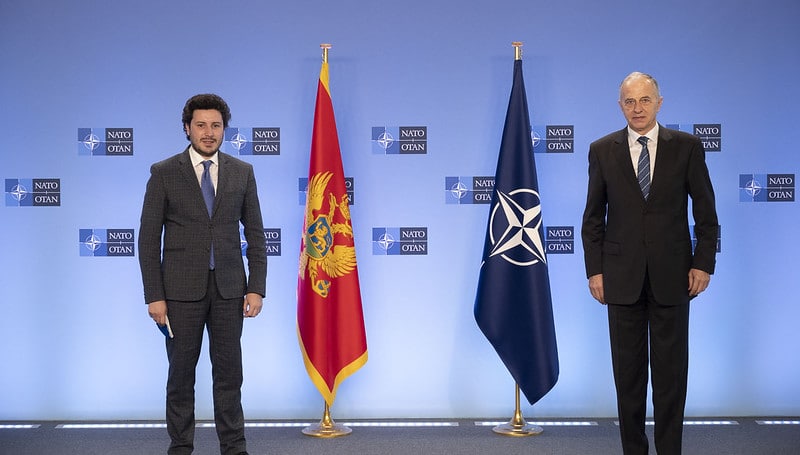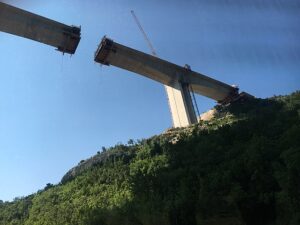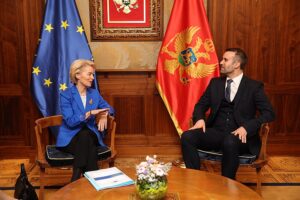NATO Deputy Secretary General Mircea Geoană (right) and the now Prime Minister of Montenegro, Dritan Abazović (left) at a NATO conference in March 2021 (source: Flickr)
The leader of the Black and White bloc (URA), Dritan Abazović, is elected as the new Prime Minister of Montenegro, with a mandate for a year. His minority government consists of the URA bloc, the Socialist People’s Party, the Social Democratic Party, the Bosniak Party and two ethnic Albanian coalitions. They will form the government until the spring of 2023, when new elections will take place.
Deep political divisions
The former Montenegrin government fell on February 4, 2022, after a vote of no-confidence instigated by Abazović’ URA. Several rows preceded the end of this coalition and former PM Zdravko Krivokapić. Internal disagreements over relations with Serbia and Russia, covid-19 policies, and the stalling EU integration process preceded URA’s no-confidence vote.
His former coalition partners, the pro-Serbian ‘For the Future of Montenegro’ and “Peace is Our Nation”, accuse Abazović of betrayal and boycotted the vote on Thursday, April 28. 45 members of the 81-seat Montegrin Parliament voted in favour of the new minority coalition.
The Krivokapić-cabinet was the first since Montengro’s 2006 independence without the Democratic Party of Socialists (DPS) led by Milo Đukanović. The pro-western Đukanović led Montenegro to join NATO in 2017, but has become unpopular in recent years due to corruption allegations. However, his party sees a return to power in the new minority government, as it will deliver key political support from the opposition. DPS’ MP Danijel Zivkovic reacted delighted: “Despite expectations, we didn’t disappear from the political scene. At the moment, the DPS supports this government, but we will return to power at full capacity in a very short period of time.”
Abazović’ agenda
Abazović said he finally wanted to speed up EU integration. He is considered a pro-democratic, liberal and moderate in the Montenegrin political landscape. He said: “I will lead an active political dialogue to improve the atmosphere in society and reduce the country’s polarization. I do not agree that Montenegro should be divided into two opposing sides, but develop as a civil state with respect for all differences.”
Five issues will be key to the new government, according to Abazović: EU integration, battling corruption, sustainable investment and development, protection of the environment and better care for children and the youth.
Rasko Konjevic, the leader of the Social Democratic Party, said the new government was the optimal solution to the political impasse in the country. “We could prepare for early elections by forming a technical government of all parliamentary parties or we could have gone to polls with the outgoing government. But this was the best political solution at the moment.”
Montenegro’s future
All eyes in Montenegro will now be on the EU integration process – especially now a window of opportunity looms due to the Russian invasion of Ukraine. However, Russian, and especially Serbian influence remains of importance in the country. The former cabinet was mainly destabilized due to conflicts regarding the large influence of the Serbian Orthodox Church in the country.
Furthermore, Đukanović’ DPS does not give support to Abazović without getting anything in return. In the lead-up to possible spring 2023 elections, his role remains pivotal. It is crucial that the EU supports the pro-democratic forces in Montenegro, in order to finally develop the long-stalled EU integration process in the country, a candidate member since 2010.
Sources: Balkan Insight Reuters Euronews ABC News
Photo: Flickr



